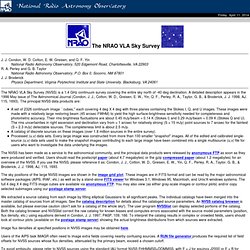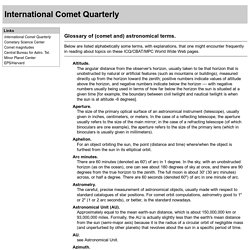

Selectial immages and information. Space agenicies. Centre for Remote Imaging, Sensing and Processing. SuperWASP Homepage. Sloan Digital Sky Survey. SIMBAD Astronomical Database. SIMBAD on the Web is the WWW interface to the SIMBAD database.

It offers the following functionalities: Query by identifiers and around identifiers Query by coordinates, specifying the radius and the equinox Query by bibcode and partial bibcode Sampling with a set of physical criteria Query by lists of objects, coordinates or bibcodes Display charts for list of objects resulting from coordinates query Moreover, the interface provides links with many other data services : Links to the other CDS services: Tables in VizieR, giving access to the whole catalogued data, links to Aladin images, surveys and observatory logs. Through the coordinates in basic data, you can query around an object, using a provided radius. SIMBAD on the Web has all the functionalities provided by XSimbad, after the addition of list queries in March 2001.
GLOBE at Night - Home page. The NRAO VLA Sky Survey. J.

J. Condon, W. D. Cotton, E. W. National Radio Astronomy Observatory, 520 Edgemont Road, Charlottesville, VA 22903 R. National Radio Astronomy Observatory, P.O. J. Physics Department, Virginia Polytechnic Institute and State University, Blacksburg, VA 24061 The NRAO VLA Sky Survey (NVSS) is a 1.4 GHz continuum survey covering the entire sky north of -40 deg declination. The NVSS has been made as a service to the astronomical community, and the principal data products were released by anonymous FTP as soon as they were produced and verified.
Missions. Human Space Flight. European Virtual Observatory. The Astronomical Almanac Online. Out of the ordinary...out of this world. Astronomy Picture of the Day Archive. Latest Outer Space News, Breaking Headlines. SAO/NASA ADS: ADS Home Page. Glossary of astronomical terms. The units used to describe brightness of astronomical objects.

The smaller the numerical value, the brighter the object. The human eye can detect stars to 6th or 7th magnitude on a dark, clear night far from city lights; in suburbs or cities, stars may only be visible to mag 2 or 3 or 4, due to light pollution. The brightest star, Sirius, shines at visual magnitude -1.5. Jupiter can get about as bright as visual magnitude -3 and Venus as bright as -4. The full moon is near magnitude -13, and the sun near mag -26. It is customary in astronomy to precede a magnitude value with a left bracket ([) and no space to indicate a limiting magnitude, when an object was not seen.
In the case of comets, we speak of a magnitude that is "integrated" over an observed coma diameter of several arc minutes; this is called the comet's "total (visual) magnitude", and is usually denoted by the variable m1. Planet Hunters. Planetary Fact Sheets. IDAHome. Galaxy Zoo: Hubble.